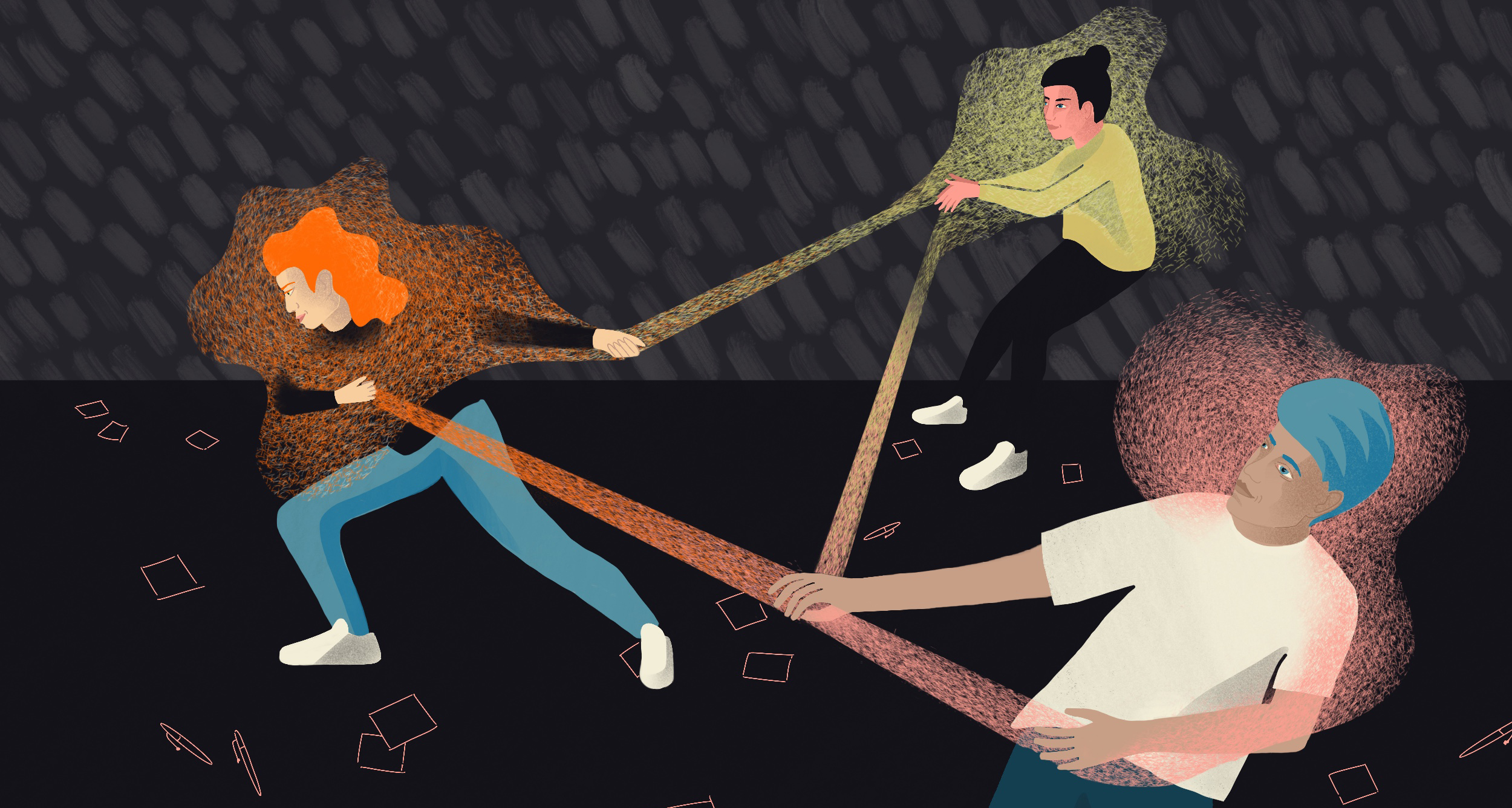4 Tips for Addressing—and Even Embracing—Tension

Tension in a team environment can make us nervously glance at the clock, play mediator, get defensive, or cling to the tried-and-true. But tension isn't always so bad (you can unclench your jaw now). In fact, we’ve found that some of our greatest work has come from embracing—even seeking out—these difficult moments.
As leaders at the CoLab, IDEO’s platform for collaborative impact, we’re familiar with tension in all its forms. CoLab brings together organizations from across industries to focus on tough challenges, from designing for the circular economy to opening our financial systems. During design sprints, small teams build prototypes to explore new opportunities. Given that team members are often industry competitors with divergent approaches and ideas, tension tends to arise. We notice participants are often used to acting with the interests of their business first, rather than seeing the collaborative potential.
In order to create the impact we’re striving for at CoLab, we need to meet this tension head-on and create ways of moving forward. No matter what you’re designing or who you’re designing alongside—be it a colleague or another organization—here are four quick tips for adopting this mindset and productively addressing tension.
Observe the dynamic
Though tension can sometimes make us want to jump into action to resolve it, there’s value in sitting back, too. Try answering the following questions for yourself: What opinion is each team member pushing forward? Why might they have this view?
Paying attention helps you establish empathy. As designers, we use empathy not only to deeply understand the realities of the people we’re designing for, but also the realities of those we’re designing with. Even if you disagree, understanding why a teammate might have a certain opinion can help you create solutions that ultimately meet a need that you might not have noticed alone.

Give it a name
Once you’ve spent time observing, try naming the tension out loud or writing it down on a piece of paper. Saying or jotting down, “There’s tension around X right now,” or simply, “I’m feeling tension,” externalizes the tension. It’s is no longer this abstract, all-encompassing feeling. The tension is a named, tangible thing that the team can hear and see — not just feel — and therefore more objectively address through listening, dialogue, or compromise. In fact, mapping out seemingly conflicting interests or goals is a great tool for synthesis and identifying opportunities for design.

Just start making
Tension frequently arises when teams are trying to align on a shared vision or strategy. After all, when there are various stakeholders involved, they’ll likely have a variety of approaches. But it’s draining to debate things like your purpose or mission statement all day long. Reaching consensus can take hours, and may not even be useful at such an early stage before teams have had a chance to validate concepts through building.
It may seem counterintuitive, but to move teams through this tension, we recommend to just start doing. Whether it’s a whiteboard sketch or a model made of construction paper and glue, acts of making can offer clarity to subjective, “big picture” items. Shifting your mental focus from defining to doing has the power to shift a team’s dynamic.
Assume good intent
Though tension can sometimes feel like opposition, it often happens because teammates are passionate about the same thing. They may just want to apply or direct this shared passion in different ways. When things get tense, remember that you’re all working towards the same goal, and that the tension is likely not about you. Don’t take it personally.
Reinforce this “oneness” and good intent through language or actions. Try this: “I’m glad we’re in the same room solving this problem together.”
The next time things get tense, try not to jump into defense mode or sink down in your chair. Tension in team environments is inevitable because each of us bring a different set of experiences and perspectives to the table (so don’t crawl under it). As a team committed to collaboration across organizations that wouldn’t otherwise work together, we’ll keep embracing tension to get to the impact we all want to see in the world.
Words and art



Subscribe

.svg)







